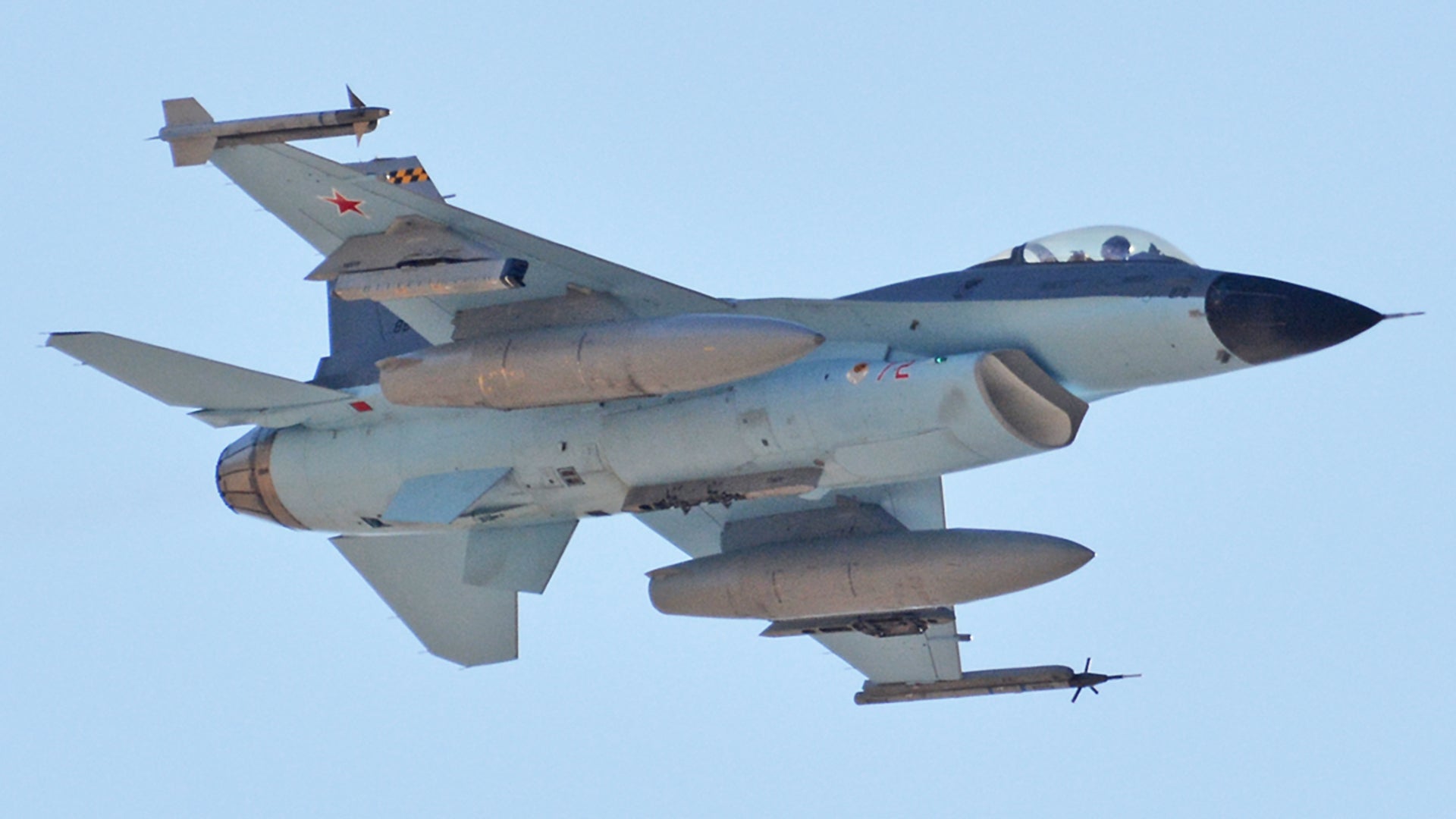The 64th Aggressor Squadron, based out of Nellis Air Force Base, is one of only two USAF units that provide dedicated adversary support. The 64th aims to take the whole threat presentation mission to an extreme level. This doesn’t just include emulating potential adversaries’ tactics and procedures, as well as their weapons and aircraft capabilities, but also presenting front-line pilots with some of the same camouflage paint jobs they could see on enemy planes in battle. As a result, you would be hard pressed to find a more eclectic looking lineup of F-16s than on the 64th AGRS flightline. Now the unit has added a new paint job to its repertoire—one that reflects that being flown on some of Russia’s most advanced fighter aircraft.
The so called “shark” scheme features a sky-blue bottom and a dark charcoal counter-shaded top, as well as red stars on the wings and a red “bort” number on its forward sides. It is nearly the same paint job as the ones currently applied to many of Russia’s top fighters, including the Su-34, Su-35, Su-30 and MiG-29K. The color combo is also worn by other Russian tactical jets as well, like the Su-25, not to mention some helicopters.
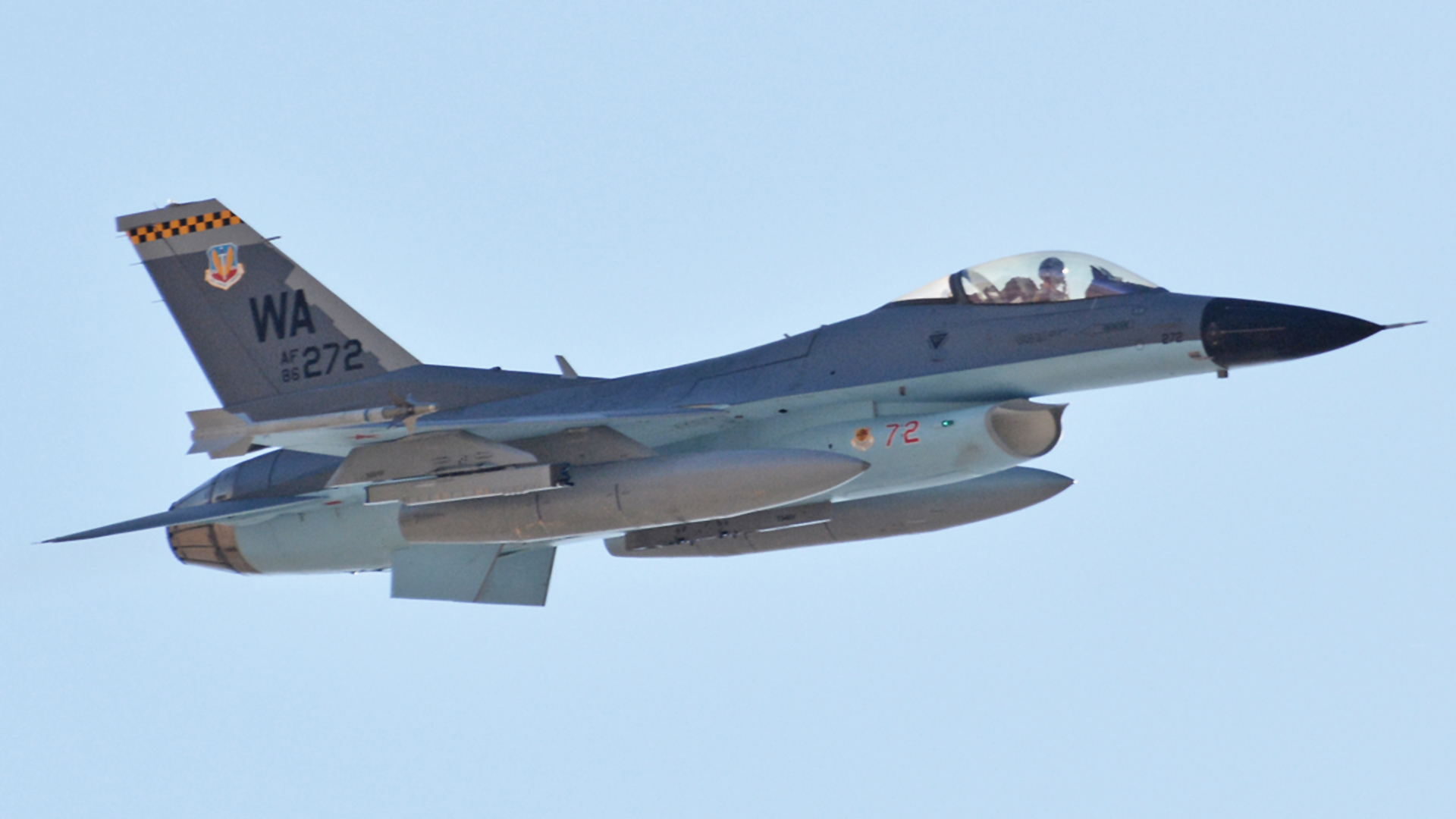
The US Navy is already flying a very similar scheme on some of its aggressor aircraft, specifically the F/A-18A+s of VFC-12 “Omars.” VFC-111 “Sundowners” have also added a similar scheme, although it is closer to that seen on one of Russia’s T-50 prototypes than the simpler “shark” scheme seen on Russian fleet aircraft.
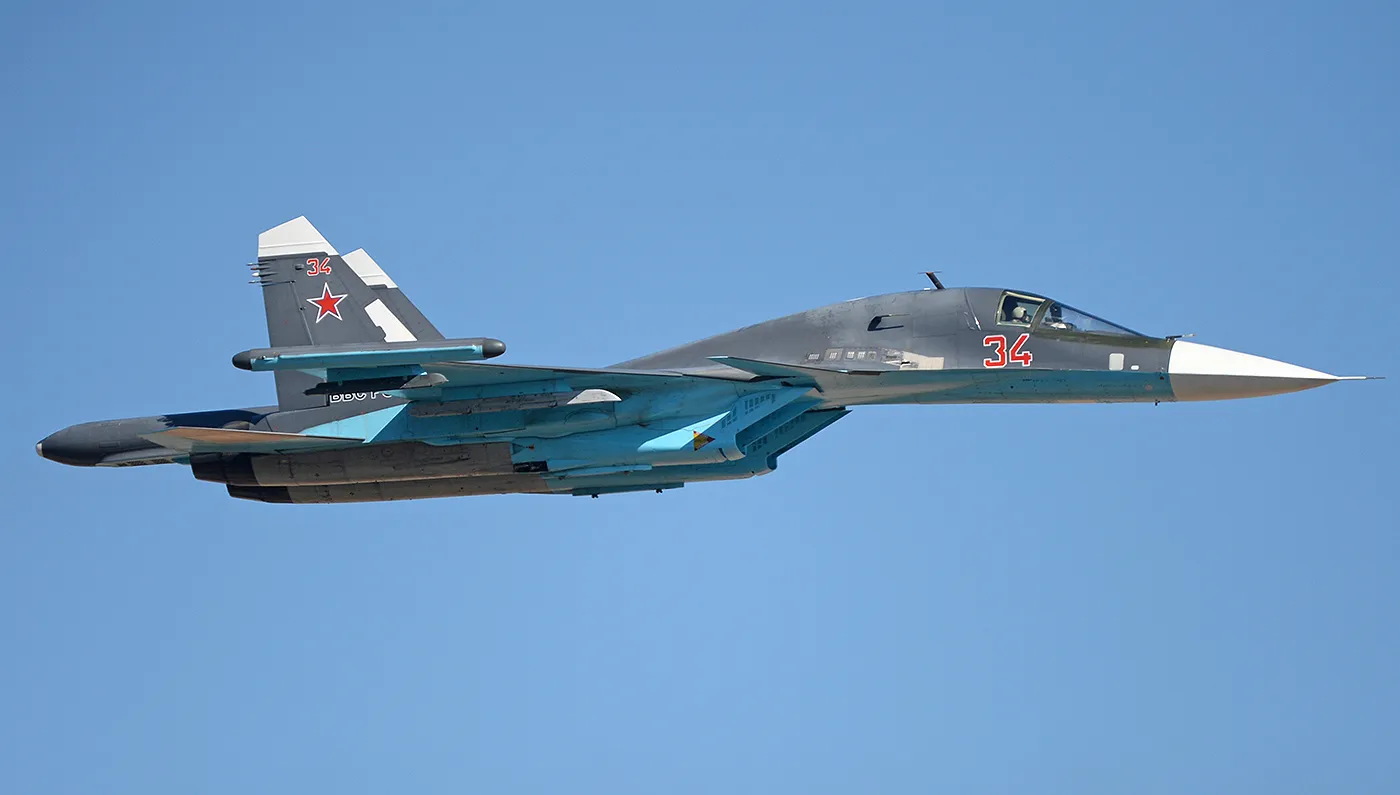
The 64th’s sister unit, the F-15C/D flying 65th Aggressor Squadron flew jets also painted in unique schemes. Before this “shark” paint job became popular, the unit introduced a “splinter” scheme very similar to those worn by early test examples of the Su-35 and T-50. The 65th was permanently shuttered in 2014 as a cost saving measure. For about a year after, the 65th’s last F-15s were temporarily integrated into the 64th, but today the full-time aggressor role within the USAF belongs to the F-16 alone.
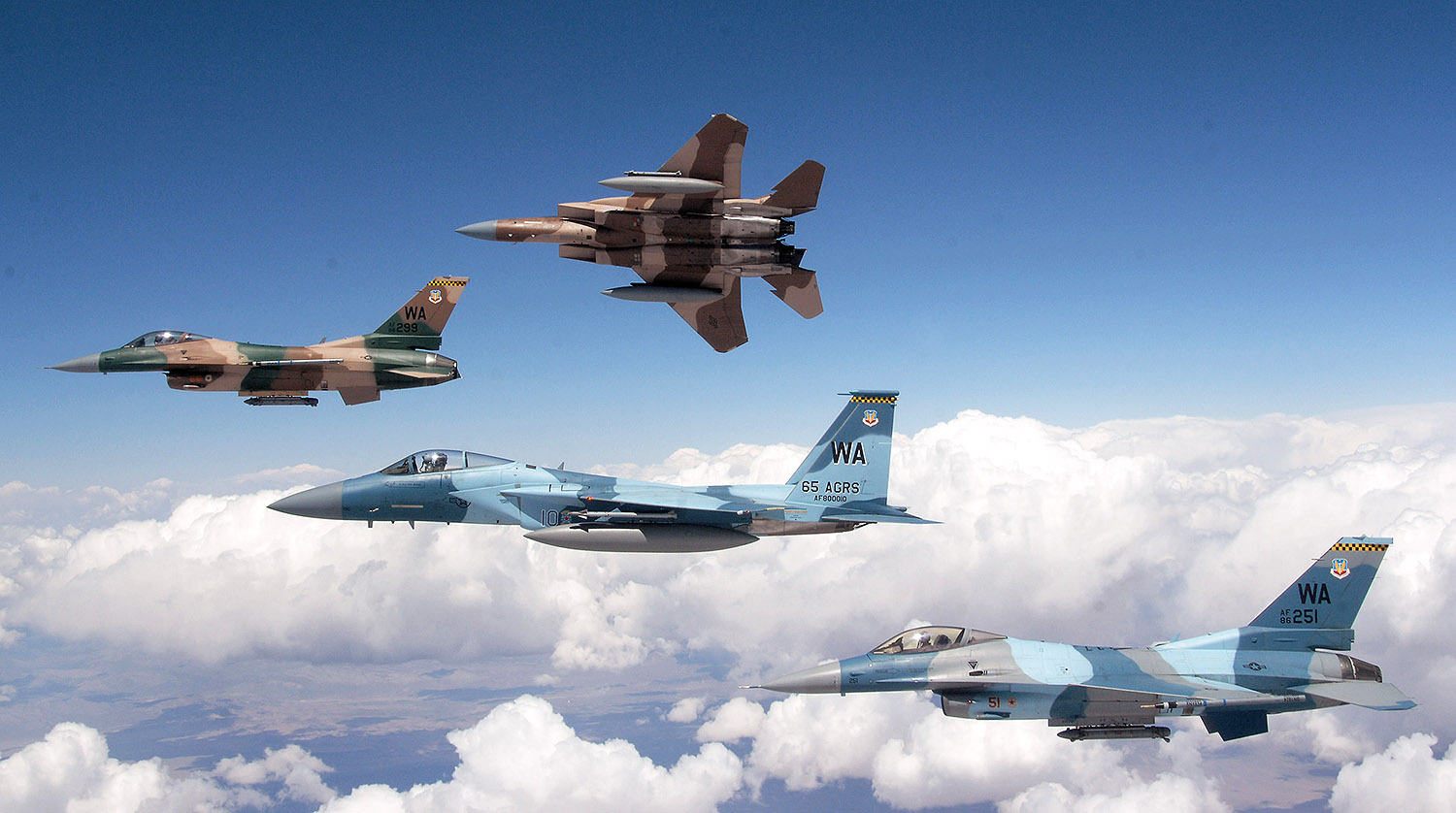
Still, the 64th has adopted some of the 65th’s most iconic looks on its Vipers, namely the “splinter” scheme mentioned above. It is all part of a an ongoing and evolving process that is supported by the 57th Aircraft Maintenance Squadron Viper Maintenance Unit’s corrosion shop at Nellis AFB. Thhere the 64th AGRS colorful dreams come to life by dedicated craftsman who have a fairly unique job within the USAF.
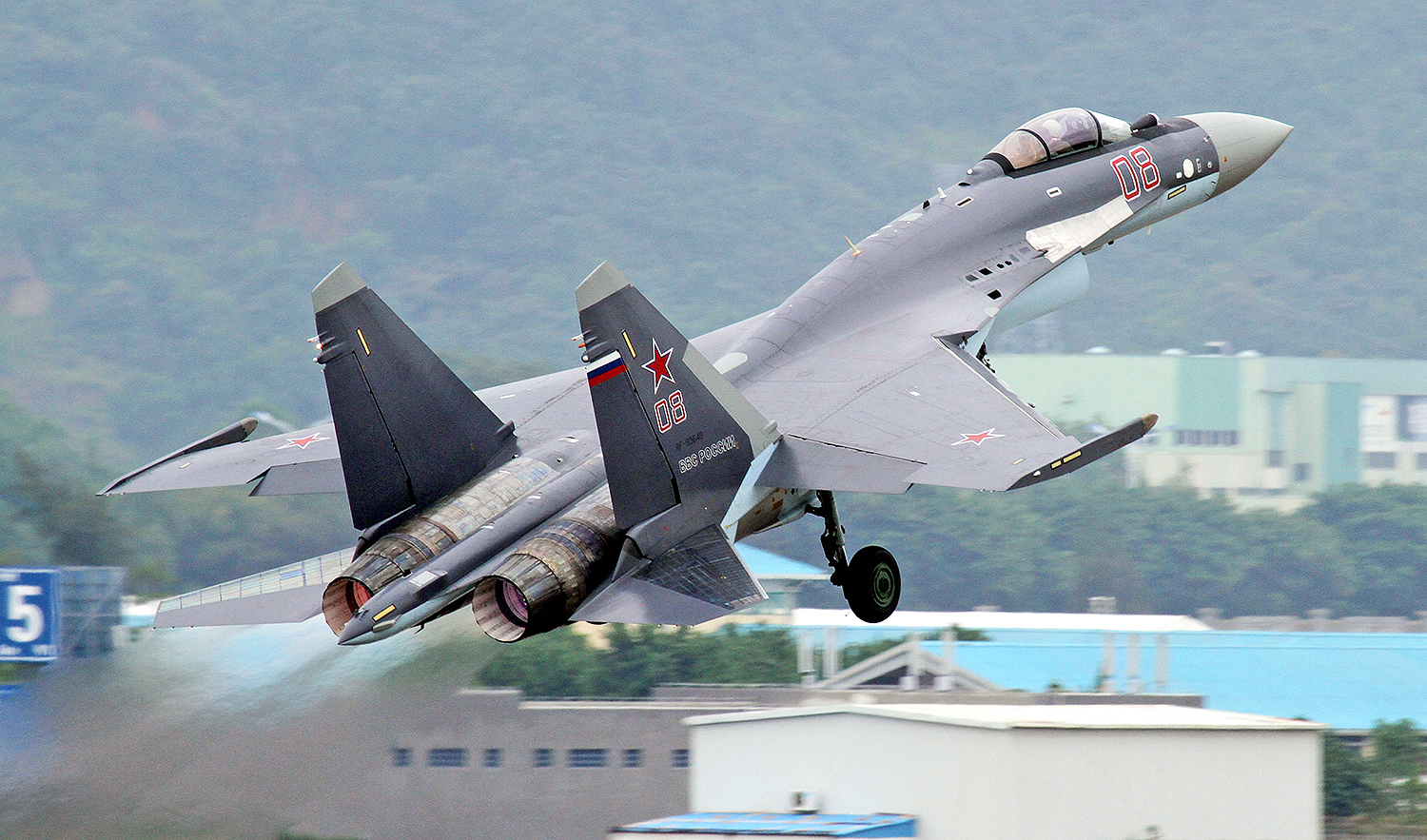
In a USAF article, Jeff Denzell of the 57th’s corrosion ship gave an idea of what goes into painting one of the 64th Aggressor’s Squadron’s unique Vipers:
“On a standard F-16 like this, it’ll take us about a week to finish repainting it… It’s kind of cool because on a Monday the worst looking jet in the fleet will come to our shop and on Friday the best looking jet will go out. It’s rewarding from that point of view. It’s like making them brand new again… Every aircraft is supposed to be painted on a six-year cycle. When we’re not doing a full paint, we’re doing major touch-ups to an aircraft. An aircraft might require a new wing or stabilizer or a new piece added to it because the old one was bad. It may not generate the need for the whole aircraft to be repainted, but it may come in for about three days to have that particular component painted. So, there’s always an aircraft in here, they’re just not always being fully painted… So the owning unit decides what color they would like the aircraft to be painted based on their needs as well as how many of that particular paint scheme they might need. We have the Aggressors stationed here, and other than Eielson AFB, you wouldn’t see these paint schemes at any other base. We have paint schemes that they don’t even have up there. We designed the blizzard paint scheme here and it was coordinated into the technical data based on our original drawings and measurements.”
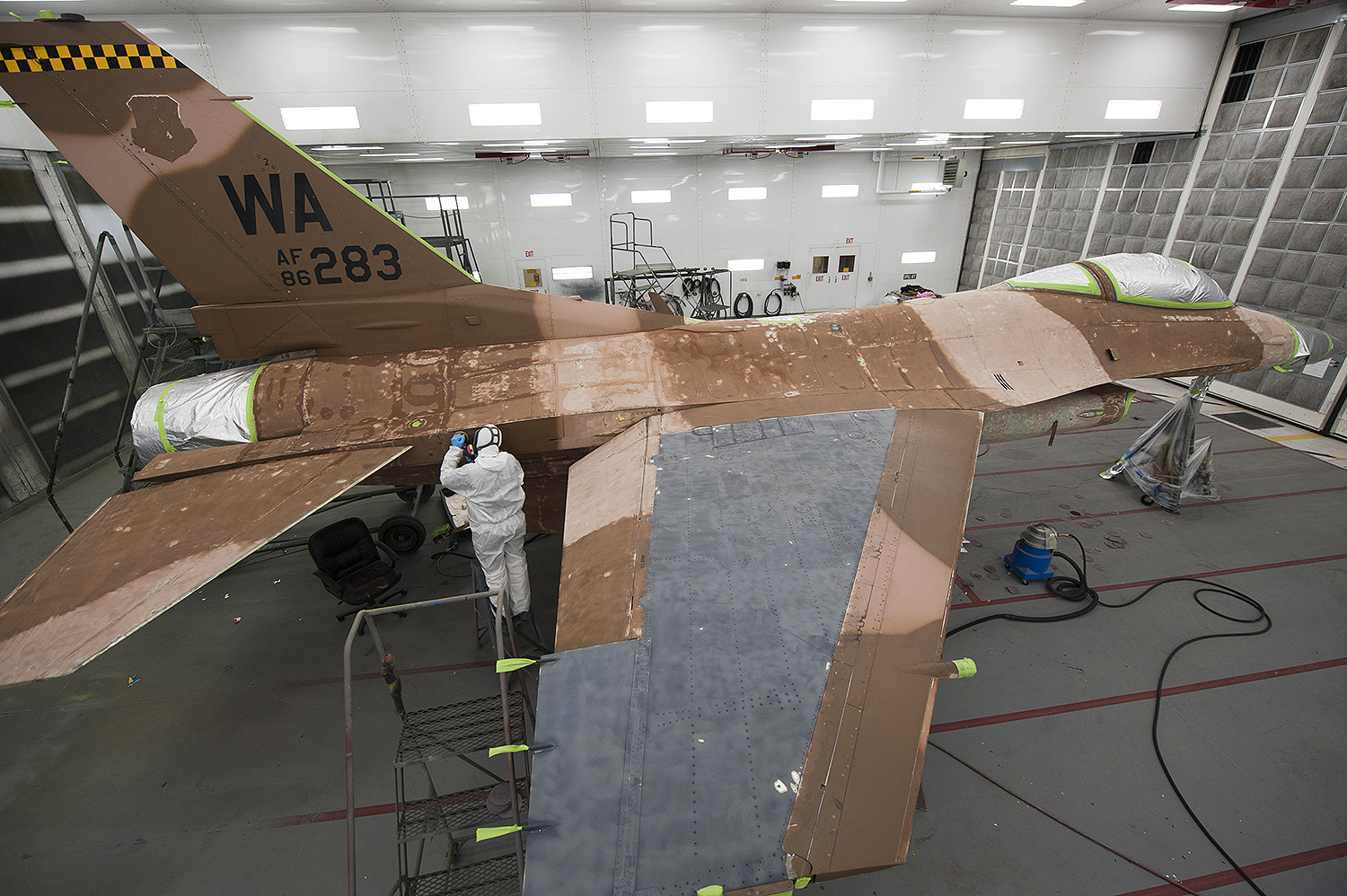
In an article in Aerotechnews.com, Captain Ken Spiro, the chief intel officer for the 64th AGRS described how they come up with these threat paint jobs. Of interesting note is that the new “shark” scheme seen today has been in the works since at least August of 2016:
“The paint scheme is a means of representing threats more accurately… There are real world threats that paint their jets in this way so we are changing over to make it more physically like their aircraft. Once a pilot who is training comes within visual range of the new Aggressor, they’ll be seeing a similar situation to what they would see with an actual threat aircraft… The idea started at the 64th AGRS because we’re always looking for different ways to be more threat representative, and make the training more realistic… The 64th AGRS gets creative in extra ways, such as paint schemes to accurately and better represent threats. We act like, look like, or anything you can think of we try so we can be true to the threats… We are working on a second ‘shark’ scheme because the 64th AGRS would like to see two threats eventually. That scheme is in the design stages right now and the preliminary designs have been sent over to Viper for their changes and approval.”

The idea of US aggressors sporting the shark scheme adorned with red stars is maybe a little more controversial than other paint jobs that have come and gone in the past as US-Russian relations have hit an all time low, and the paint job is being flown on Russian jets in Syria today. But really, the fact that the 64th can jettison the political correctness to bring a richer threat representation to front-line fighter pilots underscores how big of a deal their job is, and it is more important now than ever.
Fighter pilots have been known to get “buck fever” the first time they see an enemy aircraft in real life. This distraction can lead to mistakes being made and to slower reaction times right when brevity is needed most. The 64th gets pilots accustomed to this phenomenon in a synthetic manner, so that on the battlefield they will be able to overcome their natural tendencies.

This all fits into the larger picture of exercise Red Flag as well—an elaborate aerial war game that gives pilots their first ten combat missions (roughly speaking) without real missiles flying through the air. The Vietnam War proved that aircrews are especially vulnerable to being shot down or even worse, dying by making a dumb mistake over an unforgiving war zone, within their first ten missions. After that their odds of surviving go up dramatically. The 64th supports and helps direct Red Flag among other responsibilities, and making sure aircrews get as realistic experience as possible during Red Flag is the name of the game. Obviously resources are limited, maybe too much so as the 64th AGRS flies some of the oldest F-16s in the USAF, but for decades the presentation of accurate looking aggressor aircraft has been considered well worth the investment.
In the end the idea is that if a fighter pilot ever sees the a Flanker wearing a strange paint scheme in real life they will have already “been there and done that” and can concentrate on what’s most important—making sure the other guy, who is probably not so lucky when it comes to training, dies first.
A huge thanks to Bruce Smith, aka EOR1, for allowing us to use his pictures of the newly painted Viper. Bruce’s flickr page is a must follow, he captures most all the action at Nellis AFB on a regular basis. Make sure you check it out here and bookmark the site.
Contact the author: Tyler@thedrive.com
